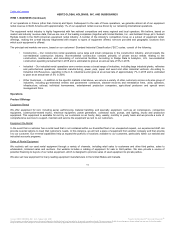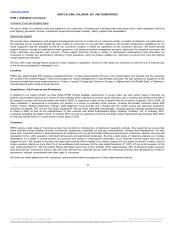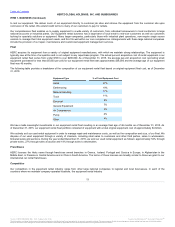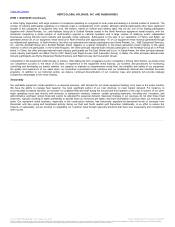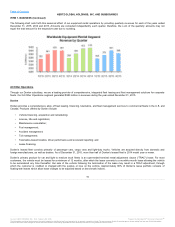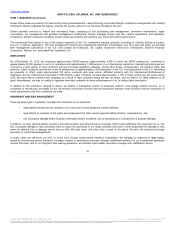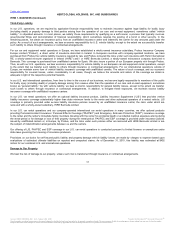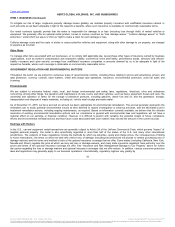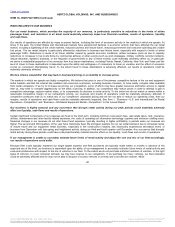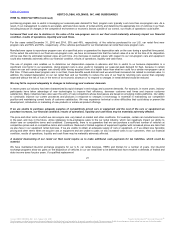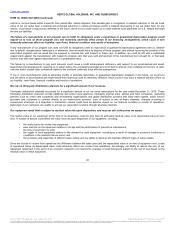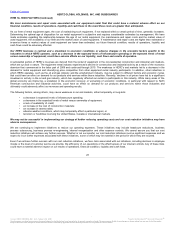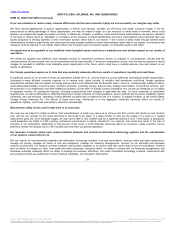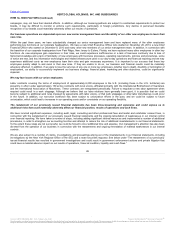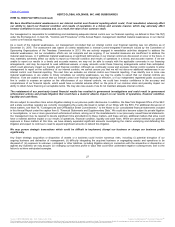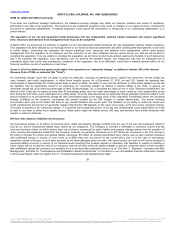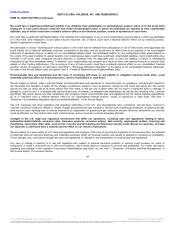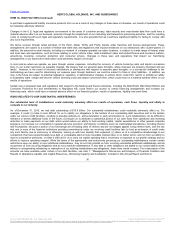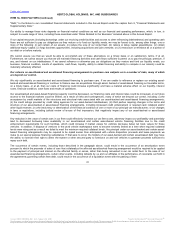Hertz 2015 Annual Report Download - page 29
Download and view the complete annual report
Please find page 29 of the 2015 Hertz annual report below. You can navigate through the pages in the report by either clicking on the pages listed below, or by using the keyword search tool below to find specific information within the annual report.
Table of Contents
purchasing program cars is useful in managing our seasonal peak demand for fleet, program cars typically cost more than non-program cars. As a
result, if our management is unable to accurately estimate future levels of rental activity and determine the appropriate mix of vehicles in our fleet,
including because of changes in the competitive environment or economic factors outside of our control, our results of operations could suffer.
For the years ended December 31, 2015 and 2014, 35% and 49%, respectively, of the vehicles purchased for our U.S. car rental fleet were
program cars and 59% and 59%, respectively, of the vehicles purchased for our International car rental fleet were program cars.
Manufacturers agree to repurchase program cars at a specified price or guarantee the depreciation rate on the cars during a specified time period.
To the extent the vehicles in our fleet are non-program cars, we have an increased risk that the market value of a car at the time of its disposition
will be less than its estimated residual value at such time. Any decrease in residual values with respect to our non-program cars and equipment
could also materially adversely affect our financial condition, results of operations, liquidity and cash flows.
The use of program cars enables us to determine our depreciation expense in advance and this is useful to us because depreciation is a
significant cost factor in our operations. Using program cars is also useful in managing our seasonal peak demand for fleet, because in certain
cases we can sell certain program cars shortly after having acquired them at a higher value than what we could for a similar non-program car at
that time. If there were fewer program cars in our fleet, these benefits would diminish and we would bear increased risk related to residual value. In
addition, the related depreciation on our car rental fleet and our flexibility to reduce the size of our fleet by returning cars sooner than originally
expected without the risk of loss in the event of an economic downturn or to respond to changes in rental demand would be reduced.
In recent years our industry has been characterized by rapid changes in technology and customer demands. For example, in recent years, industry
participants have taken advantage of new technologies to improve fleet efficiency, decrease customer wait times and improve customer
satisfaction. Many industries have also seen the entry of new competitors whose businesses are based on emerging mobile platforms. Our ability
to continually improve our current processes and products in response to changes in technology is essential in maintaining our competitive
position and maintaining current levels of customer satisfaction. We may experience technical or other difficulties that could delay or prevent the
development, introduction or marketing of new products or enhanced product offerings.
The price and other terms at which we can acquire cars vary based on market and other conditions. For example, certain car manufacturers have
in the past, and may in the future, utilize strategies to de-emphasize sales to the car rental industry, which can negatively impact our ability to
obtain cars on competitive terms and conditions. Consequently, there is no guarantee that we can purchase a sufficient number of vehicles at
competitive prices and on competitive terms and conditions. Reduced or limited supplies of equipment together with increased prices are risks that
we also face in our equipment rental business. If we are unable to obtain an adequate supply of cars or equipment, or if we obtain less favorable
pricing and other terms when we acquire cars or equipment and are unable to pass on any increased costs to our customers, then our financial
condition, results of operations, liquidity and cash flows may be materially adversely affected.
We have maintained like-kind exchange programs for our U.S. car rental business, HERC and Donlen for a number of years. Our like-kind
exchange programs allow tax gains on the disposition of vehicles in our car rental fleet to be deferred and have resulted in deferrals of federal and
state income taxes for prior years. If a qualified replacement
21
℠
The information contained herein may not be copied, adapted or distributed and is not warranted to be accurate, complete or timely. The user assumes all risks for any damages or losses arising from any use of this information,
except to the extent such damages or losses cannot be limited or excluded by applicable law. Past financial performance is no guarantee of future results.


